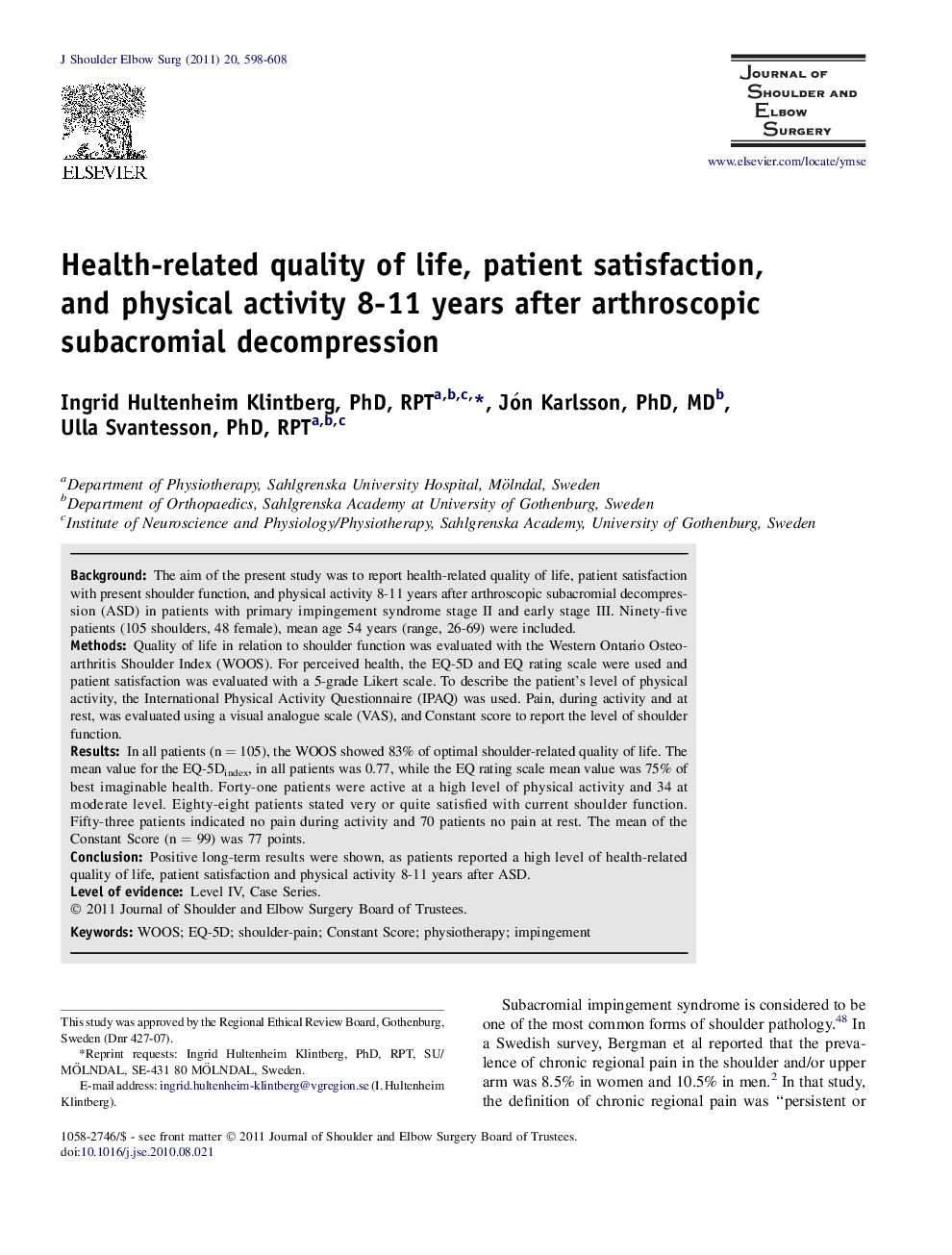| Article ID | Journal | Published Year | Pages | File Type |
|---|---|---|---|---|
| 4074534 | Journal of Shoulder and Elbow Surgery | 2011 | 11 Pages |
BackgroundThe aim of the present study was to report health-related quality of life, patient satisfaction with present shoulder function, and physical activity 8-11 years after arthroscopic subacromial decompression (ASD) in patients with primary impingement syndrome stage II and early stage III. Ninety-five patients (105 shoulders, 48 female), mean age 54 years (range, 26-69) were included.MethodsQuality of life in relation to shoulder function was evaluated with the Western Ontario Osteoarthritis Shoulder Index (WOOS). For perceived health, the EQ-5D and EQ rating scale were used and patient satisfaction was evaluated with a 5-grade Likert scale. To describe the patient’s level of physical activity, the International Physical Activity Questionnaire (IPAQ) was used. Pain, during activity and at rest, was evaluated using a visual analogue scale (VAS), and Constant score to report the level of shoulder function.ResultsIn all patients (n = 105), the WOOS showed 83% of optimal shoulder-related quality of life. The mean value for the EQ-5Dindex, in all patients was 0.77, while the EQ rating scale mean value was 75% of best imaginable health. Forty-one patients were active at a high level of physical activity and 34 at moderate level. Eighty-eight patients stated very or quite satisfied with current shoulder function. Fifty-three patients indicated no pain during activity and 70 patients no pain at rest. The mean of the Constant Score (n = 99) was 77 points.ConclusionPositive long-term results were shown, as patients reported a high level of health-related quality of life, patient satisfaction and physical activity 8-11 years after ASD.
